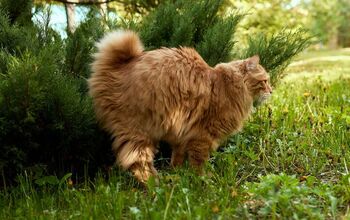Scotchi

Great as lap and companion dogs, the Scotchi has balanced character traits: there’s a lot of fun and goofiness to go around, but they are gentle and affectionate as well.
Scotchi Basics
The world of unique designer dog breeds is all about surprising you with new and unexpected breed combinations, such as the Scotchi, which combines the dashing and elegant Scottish Terrier with a somewhat unexpected partner – the Chihuahua. The resulting designer breed is a cute, tiny, and very playful dog that will charm you from the get-go. Also known as the Scotchahua, these small dogs can bring a whole dimension of fun into your life. Great as lap and companion dogs, these crossbreeds have balanced character traits: there’s a lot of fun and goofiness to go around, but they are gentle and affectionate as well. This makes them ideal pets for families of all shapes and sizes, from solo owners and seniors to couples and families with children.
Origin
For such a relatively new crossbreed, the Scotchi can be proud of a venerable and far-reaching parentage. Both the Scottish Terrier and the Chihuahua are well-known and established breeds, loved around the world for both their looks and characters. And the combination of the two was a long time coming.
The Scottish Terrier is an unmistakable breed. Loved for their unique looks, they are popular as house pets and show dogs. Their origins can be traced as far back as the 1400s, to the Highlands of Scotland. Hardy and brave, these terriers were bred to hunt rats and vermin on farms and to pursue foxes and badgers in hunts. They became known for their loyalty, bravery, and affectionate nature. The true highlanders of the doggo world, the popularly-called Scotties are an iconic symbol of Scotland’s rugged Highlands.
The Chihuahua is an equally old breed, although coming from an entirely different part of the world. When the Spanish Conquistadors came to Central America, they encountered the enigmatic ancient Aztecs. And along them were these tiny, perky puppers – the Chihuahuas! Ever since that discovery, these dogs were among the most popular house pets in the world. Full of character and super tiny, they are a whirlwind of fun.
The Scotchi, however, is much younger than its parent breeds. Its likeliest origins can be traced to the late 1990s and early 2000s when the designer dog trend was at its height. But the youth of this breed is no big deal – the Scotchi is nevertheless a well-liked dog that is quickly winning the hearts of owners across the globe.
Pedigree
As it goes with many recent designer breeds, finding a unified appearance and a documented pedigree can be a bit of a challenge since there can be a bit of variation from dog to dog and they usually don’t have a detailed family tree. A lot depends on the parentage, the actual type and looks of both the Chihuahua and the Scottish Terrier, and many other factors. In fact, the breeders themselves are often clueless about the final appearance of the dogs they breed. Nevertheless, some iconic features of the Scotchi can be spotted in all dogs.
The muzzle is most often elongated and proportional, and it may – or may not – have long whiskers and bushy eyebrows. The tail is curved and perked up, as after the Chihuahua, while the ears are more after the Terrier, triangular and floppy. In certain cases, the Scotchi might have an underbite, like the Chihuahua parent.
Food / Diet
Nutrition is crucial in the life of every dog. In fact, it can be one of the most important things when it comes to their overall health. For Scotchies, it is important to focus on their energy levels and their habits. Generally, a high-quality kibble with high protein content and essential nutrients is advisable, as well as some natural food, like healthy chicken. Of course, it is always best to offer small portions to your dogs, perhaps a few times per day, instead of big single meals that can weigh them down and create indigestion. If kibble is your choice, then stick to the recommended portions and don’t overfeed your pet. Split that into no less than two meals per day, and you’re all set. A few treats here and there will be just fine too. Of course, your vet can provide all the important information you might need about tailoring the diet to your pet’s unique needs – they know best, after all.
Just remember that it is important not to overfeed your dog. These are generally small dogs, and they might suffer from obesity if neglected. The rule is to provide your pet with plenty of exercise daily, in order to burn off all extra calories and to keep their system running as best it can. Otherwise, you might end up with a chubby little Scotchi, and from there, obesity is one step away. And with it come a whole string of nasty health issues that you don’t want for your pet.
Training
The Scotchi is a very smart, intuitive, and loyal dog. Due to this, training should be a straightforward experience, without too many snags. The Scottish Terrier is known as an obedient, confident, and brave dog and easy enough to train. The Chihuahua, on the other hand, is well known as a stubborn, willful, and somewhat hard-headed dog that plays according to its own rules rather than those you set. If your Scotchi took after that side, then training could be a bit of a challenge. Still, it’s not an impossible task – with a bit of patience and a solid plan, you can train your Scotchi with minimal effort.
Remember that positive reinforcement is key: there’s nothing that rewards and praise cannot accomplish. Scolding and punishments will only serve to further alienate your dog from you – and that’s not something you want. Whenever your Scotchi successfully obeys your command, offer them a tasty treat. They are very smart and will quickly associate the two. Just adopt a strong, decisive stance and let your pet know that you are the alpha in that relationship.
Weight
These are small breed dogs, just as the parent breeds are. The Scotchi will weigh from 16 to 20 pounds on average, and their height won’t exceed 8 to 11 inches. The males can be just a tad bit bigger than the females. Either way, these are petite dogs and won’t require a lot of free space in the house – they adapt well to apartment living, but a spacious home with a fenced-in yard would be the ideal setting for a Scotchi. They are naturally a very outdoorsy breed and will love to run around and exercise in the yard.
Temperament / Behavior
The Scotchi really has a colorful character with many layers which you will often discover step by step. They are fantastic family pets that go well with children and have a strong protective streak. Known for their loyal nature and extreme confidence, these pooches will never fail to alert you of strangers with their iconic bark. But they are also incredibly fun! The Scotchi has a lot of energy and will enjoy playing and performing tricks. You can simply lose the idea of the time when playing fetch in the park with a Scotchi.
Of course, it’s not all about energy and playtime. The Scotchi knows the delights of a good snooze, and won’t hesitate to take a great nap on your lap or in their favorite corner. And don’t forget about that important socialization. These are very friendly dogs, and lonely lives won’t do them much good. Introduce them to other friendly dogs, kids, and new strangers. It will do a lot for their mood and benefit them in the long run.
Common Health Problems
In general, the Scotchi is a surprisingly hardy dog. Much like the Scottish Terriers, they can endure all sorts of environments with ease. After all, this parent breed had to endure the windswept and rugged Scottish Highlands, hunting rats and badgers! You have to be healthy to do that. This ruggedness has been transferred to the Scotchi too – they won’t suffer from too many ailments in their lifetime. Some of the major health conditions they might develop there are hip dysplasia, Legg-Calve-Perthes disease, hypothyroidism, and hydrocephalus. These, however, are rare conditions. As for the minor health issues that can occur, these include cataracts, dental issues, arthritis, obesity, and indigestion.
Of course, all of these are only possibilities and might not affect your pet at all. Of course, the general rule remains: seek the advice of your vet whenever you’re in doubt and don’t forget to take your pet for regular preventive checkups.
Life Expectancy
Scotchis are surprisingly long-lived – their average life expectancy is from 12 to 15 years. Still, don’t think they can reach their golden years all on their own. A Scotchi will need regular vet checkups, a healthy diet, and lots of exercise to stay happy and healthy and live out his potential.
Exercise Requirements
The Scotchi is an energetic little dog, playful and full of spunk. However, they are not extreme when it comes to energy levels. A moderate daily exercise routine will be quite sufficient – 60 to 90 minutes of activity is more than enough. Due to their small size, they won’t exceed as runners, but a bit of engaged playtime will be just fine. It is best to establish a daily routine that will satisfy all their needs for outside time and play.
Remember to not keep them cooped up indoors for long. No matter how house-based a dog is, they still need to experience the outside and to run freely. It’s in their nature after all.
Recognized Clubs
Many relatively new designer dog breeds are struggling to find recognition worldwide. This is not the case with the Scotchi, who are already on the recognized lists with some of the leading clubs and registries. Some of the clubs that recognize it are the American Canine Hybrid Club (ACHC), the International Designer Canine Registry (IDCR), the Dog Registry of America (DRA), and the Designer Dogs Kennel Club (DDKC). However, they are not a recognized breed by the American Kennel Club (AKC).
Coat
The coat of the Scotchi can vary greatly from dog to dog. If they take after the Scottish Terrier, then their coat can be long, shaggy, and wiry. But if they take after the Chihuahua more, then their coat will be smooth and short. The colors of the coat can vary from black, brown, and red, to fawn, tan, white, and gray.
In general, their coats will be medium-long with normal density. As such, they will require only moderate brushing, once or twice per week. Moderate shedders, these dogs won’t be hard to keep tidy and to look after. It is best to establish a regular routine of weekly brushings and monthly groomings to keep your pet looking and feeling their best.
Puppies
The puppies of the Scotchi can be incredibly cute – you’ll just want to snuggle them continuously! But remember that they are gentle little things and avoid large crowds in those early days, as that can stress them out or hurt them. Once the vulnerable days are passed, you can begin with the socialization of your puppy. This is an important step of their growing up, as it helps them become friendly, tolerant, and behaved. Fail to do this, and you Scotchi can become a bit aggressive, snappy, grumpy, anxious, and over-protective.
The puppy years are also a great time to begin training. Adopt a commanding role and let your Scotchi know the “rules and regulations” of your relationship. The sooner you start, the easier it will be: puppies learn surprisingly fast!

A proud mama to seven dogs and ten cats, Angela spends her days writing for her fellow pet parents and pampering her furballs, all of whom are rescues. When she's not gushing over her adorable cats or playing with her dogs, she can be found curled up with a good fantasy book.
More by Angela Vuckovic























